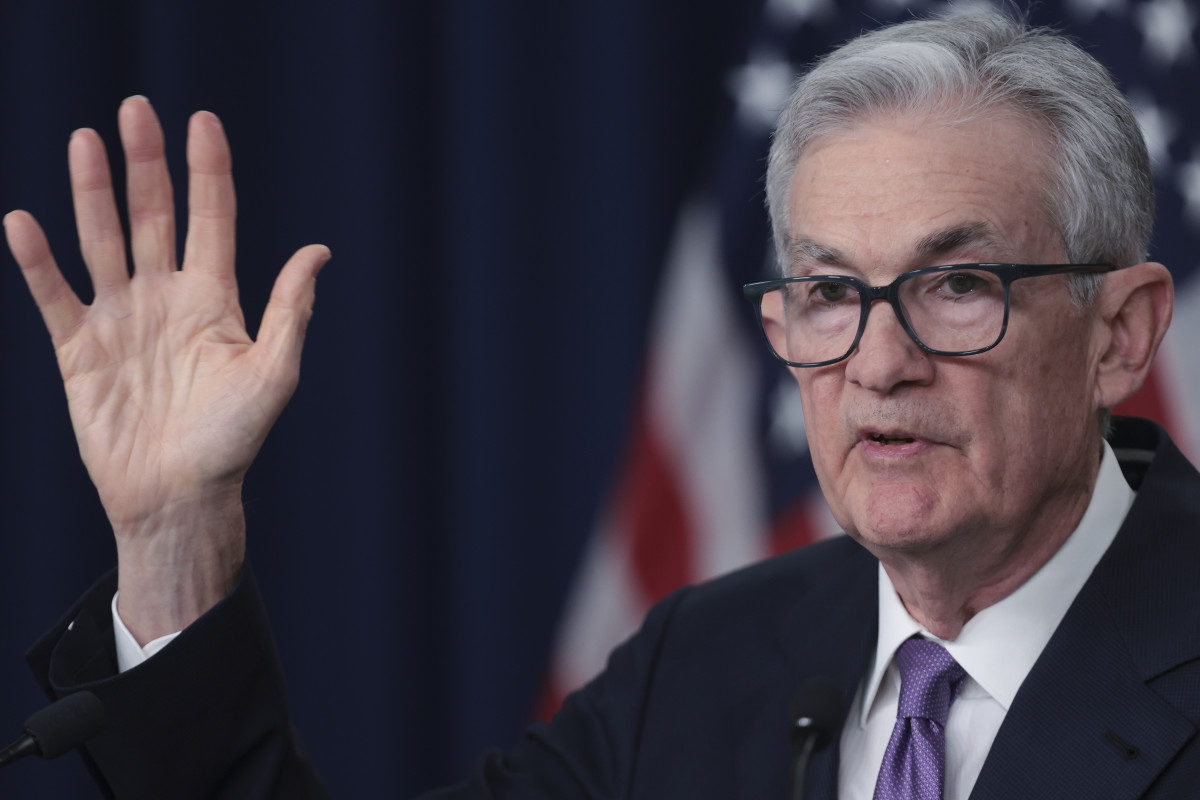
Buying a home has been a problem for more than two years.
And it will continue to be a struggle for many buyers until . . .
The "until" — at least in the short term — is the Federal Reserve under Chairman Jerome Powell and its interest-rate policy.
Related: Housing has a problem bigger than interest rates
The rate on a 30-year mortgage was more than 7% this past week and has mostly been above that level since early February. It reached nearly 8% in October 2023.
The Federal Reserve's signal late that month that it was done raising rates set off a big rally in stock and bond prices and pushed mortgage rates lower, to as low as 6.6% in January.
But seven months after the October announcement, the Fed's key interest rate — the federal funds rate — is still stuck at 5.25% to 5.5%, where it has been since July 2023. U.S. interest rates are built with the fed funds rate as the foundation.
And that's stalling the housing market.
When buyers are interested and not interested
The 7% level appears to be a break-point for many buyers, When it tops that level, buyers postpone searches for that first home or the next one.
"Borrowers remain sensitive to small increases in rates," said Joel Kan of the Mortgage Bankers Association in a recent statement about a slide in mortgage applications.
You can see how rate changes changed buying decisions in the April pending-home sales report from the National Association of Realtors for April. The index fell 7.7% from March and was off 7.4% from April 2023.
The index stood at 115.2 at the end of 2021.
For any buyer, the key financial issues are:
- Price
- Down payment
- Mortgage
- Mortgage rate
Here's how these four issues interact, assuming a house priced at $350,000 with a 20% down payment and a 30-year fixed-rate mortgage of $280,000.
The Fed was desperate to keep rates low to keep the economy afloat during the Covid-19 pandemic, which kept mortgage rates as low as 2.66% in 2020.
- 2020: Mortgage rate of 2.66%. Principal and interest payment on a 30-year mortgage: $1,130.
- October 2023: Mortgage rate hits 8%. Principal and interest payment on a 30-year mortgage: $1,860. Change from 2020: +78.6%.
- January 2024: Mortgage rate falls to 6.6%. Principal and interest payment on a 30-year mortgage: $1,788. Change from 2020: +55.4%.
- May 2024: Mortgage rate rises 7.17%. Principal and interest payment on a 30-year mortgage: $1,860. Change from 2020: 62.4%. Payment change from January 2024: 4.5%.
Sellers know how these issues work when they bought own their homes.
Big homebuilders like Lennar (LEN) and KB Home (KBH) are actually helping buyers right now by offering buydowns: breaks on the size mortgage payments for a year or two to make a sale.
Related: Home Depot CEO sounds the alarm on a growing problem
Three important notes:
None of these numbers include taxes and insurance. These obligations are usually included in a mortgage payment and forwarded by the lender to the insurance company and taxing authority.
Home prices have not been static. In most markets, they have been rising, sometimes very rapidly. If the price of the home has moved to $400,000, forcing the buyer to come up with an $80,000 down payment, the monthly P&I payment at the 7.1% rate would be about $2,670. Small wonder that many homeowners with low-rate mortgages are reluctant to sell. Where would they go?
Rates are not high by historical standards. They ranged from 7% to 9% in the 1970s, topped 17% in the early 1980s and were above 8% at the end of the 1990s. It's the interaction of rates, supplies and prices that have created the situation.

Home buyers face other daunting problems. These include:
Tight housing supplies
This is especially true in markets like Los Angeles, San Francisco, New York, Boston and Houston.
That means home buyers are competing with other buyers.
And getting the seller to accept a buyer's purchase bid means everything must be ready to go: mortgage financing and a lender commitment to qualify you for the loan.
More Real Estate:
- Watch out for 8% mortgage rates
- Don't let Fed keep you from buying dream house: real estate expert
- Consumers turn to deals as housing costs soar
Lack of inventory
The United States and many developed nations have not been able to expand housing to accommodate growing populations.
In the U.S., affordability is a key issue, especially in the priciest markets. Those are in major metro areas.
Local development rules and permitting requirements have depressed housing supplies.
Many developers aren't interested in middle-class housing as they did after World War II and into the 1970s.
About 45% of U.S. home sales are priced between $250,000 and $500,000, according to National Association of Realtors data. Another 18% of sales are priced between $500,000 and $750,000.
Only 19% of sales are in the $100,000-to-$250,000 range.
Those are long-term problems. For now, the question is when the Fed feels confident enough that inflation is under control and heading to 2% a year on a sustained basis.
Related: Veteran fund manager picks favorite stocks for 2024







